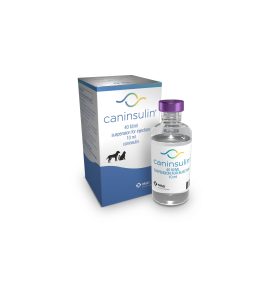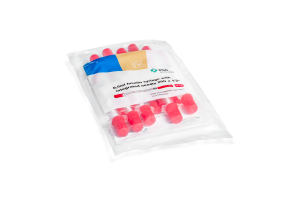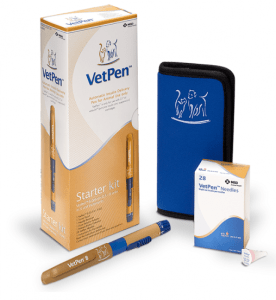
Treatment
Diabetes can be managed successfully with a daily routine of insulin treatment, diet and exercise
What do I need?
- A clean, cool and dark place (usually a refrigerator) to store your insulin in an upright position. DO NOT FREEZE.
- A suitable balanced and consistent diet for your dog.
- Treats that are suitable for a diabetic dog and are included in your dog’s daily caloric intake.
- A regular exercise routine – you may want to consider using an Activity Tracker
- Home monitoring resources, such as the Pet Diabetes Tracker mobile app, as advised by your veterinarian.
- A source of glucose. See Emergencies.
- Good communication with your veterinarian.
- Commitment to the long-term treatment of your pet.
Spaying Female Dogs
Insulin resistance is caused by the ovarian hormone progesterone. Surgical removal of the ovaries with or without the uterus (spaying – ovariohysterectomy or ovariectomy) will make your female dog’s diabetes easier to manage. There is also a small chance that your dog’s diabetes may not be permanent. If diabetes mellitus has been diagnosed in your intact female dog, spaying should be carried as soon as possible if your dog is feeling well. If your dog is unwell (not eating or drinking and has very high blood glucose) then your dog may require rehydration (sometimes via an intravenous infusion) and insulin treatment before the surgery can be carried out.
Following surgery, the response to insulin will often improve and the insulin demand will decrease accordingly. These dogs need to be monitored carefully as some may cease to need insulin injections.
Starting Insulin Therapy

Your veterinarian will calculate a suitable insulin dose, based on your dog’s body weight.
Your veterinary team is there to help you. They will teach you everything you need to know about giving insulin injections. They will recommend appropriate diet and exercise and advise you on how to best monitor your dog’s progress. Shortly after starting insulin treatment, your dog’s signs should start to improve – your dog will be less thirsty, urinate less often and feel better. Pay close attention and record these and other changes, including your dog’s appetite and attitude. Your veterinarian may need to adjust your dog’s insulin dose, based on how well your dog is doing and the results of follow-up tests (such as blood glucose measurements). A consistent daily routine, monitoring plan and communication with your veterinary team are key to managing your dog’s diabetes.
Once or twice daily treatment?
While some diabetic dogs can be managed on once daily insulin injections, many dogs need twice daily insulin injections to manage their diabetes.

“I was worried about getting injections at home, but now that I feel like my fun-loving self again it’s all worth it.”
SPIKE
Pet Diabetes Month
Pet Diabetes Month celebrates amazing diabetic pets and all of you that care for them. Hear from other pet owners about their experiences caring for pets after a diabetes diagnosis, and how managing their diabetic pet was not as difficult as they thought.





